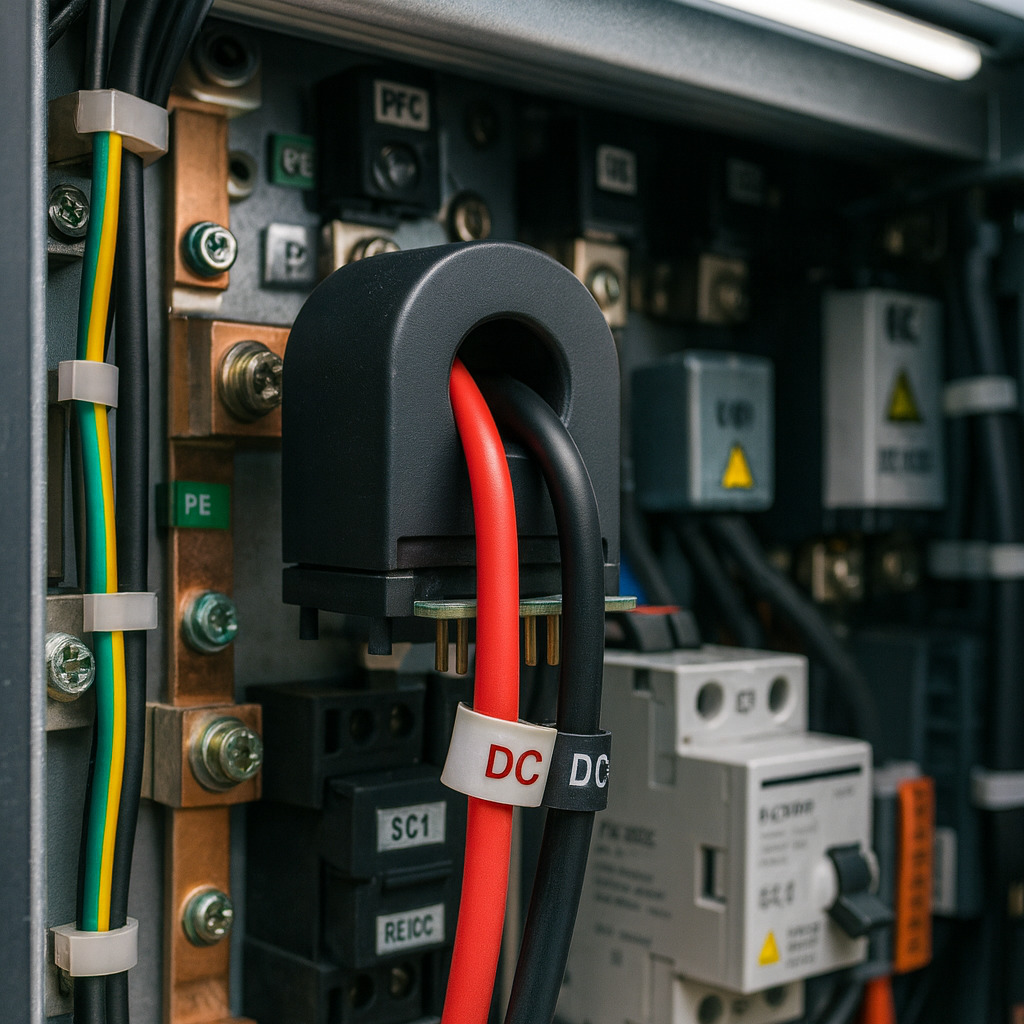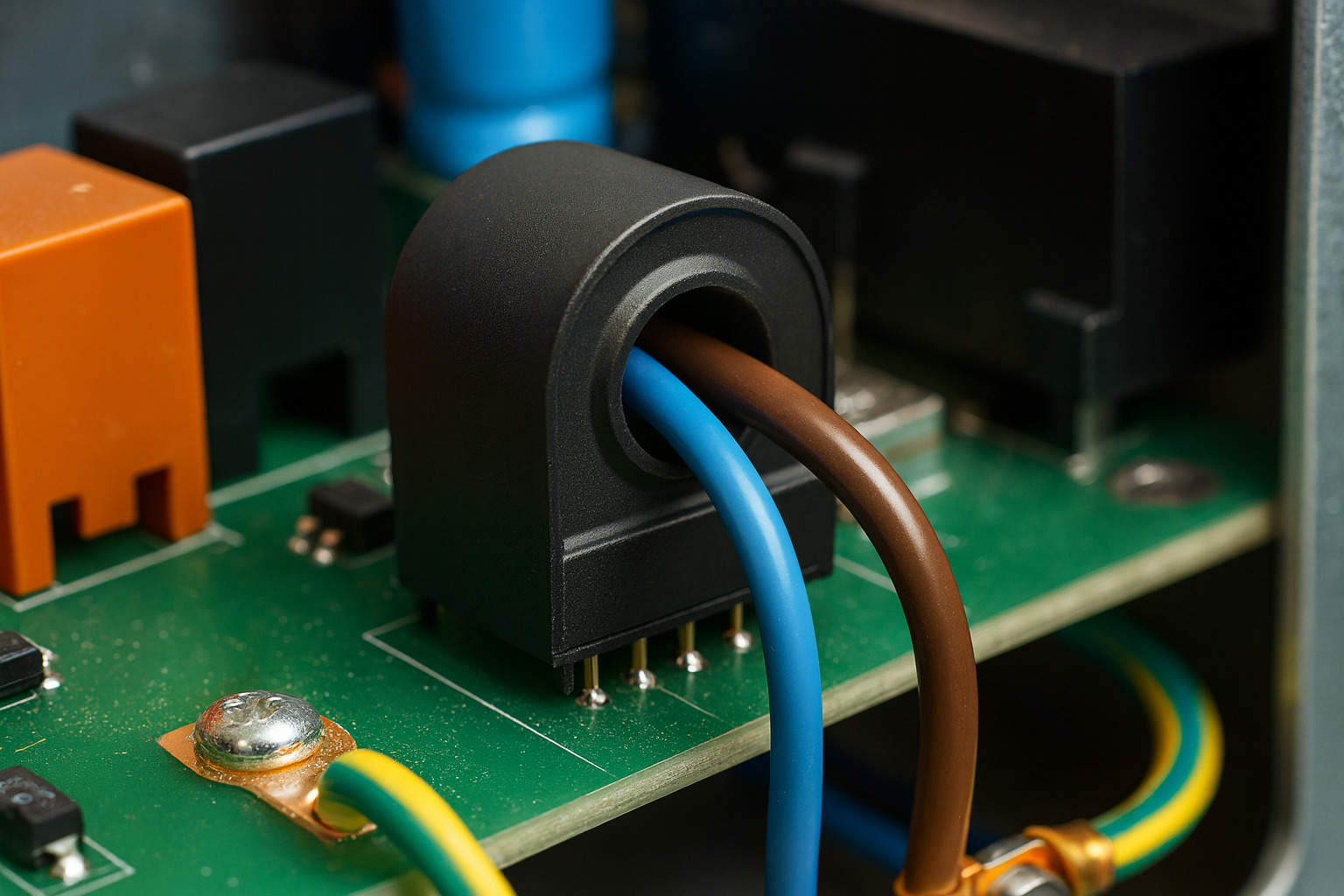News | company news | Sep 11,2025
ground fault current sensor in current monitoring of fast EV charging piles and slow EV charging piles
Based on HEYI HYCA-10-PD
With the rapid adoption of new energy vehicles, the construction of charging infrastructure has entered a period of rapid development.
EV Charging piles, as core equipment for power transmission and metering, necessitate crucial functions, including current sensors and residual current monitoring units.
These sensors not only impact the accuracy of energy billing but also directly impact personal and equipment safety.
This article, based on the HEYI HYCA-10-PD ground fault current sensor , will delve into the differences between current sensors used in fast and slow EV charging piles.
Slow charging pile (AC slow charging)
Power range: 3.5–22kW
Current range: 16–32A (single-phase/three-phase AC)
Main function: Nighttime charging for home users , focusing on household power consumption metering accuracy and AC leakage protection .
Fast EV charging pile (DC fast charging)
Power range: 60–350kW
Current range: typically 200–500A , sometimes higher
Main functions: Rapid energy replenishment, requiring vehicle charging to be completed within tens of minutes, focusing on heavy current monitoring , DC residual current detection and system safety.
In AC slow charging scenarios, the core tasks of current sensors are accurate measurement and basic protection:
Slow charging stations are commonly used for low- power charging in homes or public places , where accuracy in electricity billing is crucial. The HYCA-10-PD provides 32–40A RMS current monitoring capability, ensuring high accuracy and low temperature drift within this range , making it suitable for long-term stable operation monitoring.
Slow EV charging piles are primarily exposed to the risk of AC leakage. The HYCA-10-PD has a built-in AC/DC sensitive detection module that can quickly detect a typical AC current of 30mA, meeting IEC 62752 requirements and ensuring personal safety.
HYCA-10-PD is installed on a PCB board, with a small size and low power consumption (≤110mW), making it very suitable for the application requirements of integrated and low-cost slow charging piles.

requirements of fast charging piles are to monitor high current and ensure adequate safety:
Fast charging piles typically output currents of hundreds of amperes, and the HYCA-10-PD’s 40A range is insufficient for monitoring the primary current.
Fast charging piles typically use Hall sensors, shunts + isolation amplifiers, or fluxgate current sensors to accurately monitor DC and high currents.
Under high DC current conditions , if a DC residual current of 6mA or greater occurs, traditional AC leakage protectors will fail.
Therefore, the HYCA-10-PD provides DC component detection capabilities for this scenario and complies with the IEC 62955 standard, providing safe and redundant protection for fast EV charging piles .
Fast charging piles have higher requirements for safety protection time. When the HYCA-10-PD detects a residual current of 30mA~100A, it can act within 8.5–60ms, significantly improving system safety.
Differences between standards and regulations
AC slow charging pile:
mainly complies with IEC 62752, emphasizing the protection of AC leakage current ≤ 30mA.
DC fast charging piles:
must comply with IEC 62955 and require a sensitive response to DC residual current ≥6mA to avoid AC-RCD failure.
HYCA-10- PD is perfectly adaptable to both standards , especially under DC fast charging conditions , and can serve as a safety device for RDC-PD (DC residual current detection device) .

| project | Slow charging pile | Fast charging pile |
| power | 3.5–22kW | 60–350kW |
| Current range | 16–32A | 200–500A |
| Sensor core tasks | Accurate metering and electricity bill settlement | High current monitoring, system safety |
| Key points of leakage detection | AC residual current (IEC 62752) | AC+DC residual current (IEC 62955) |
| HYCA-10-PD Effects | Main current monitoring + AC leakage protection | Assist RDC-PD to detect DC residual current |
In the field of new energy vehicle charging piles, the application of residual current sensors varies significantly with the charging power.
AC slow charging pile:
HYCA-10-PD can be used as the core component for main current monitoring and leakage protection, taking into account both accuracy and cost.
DC fast charging pile:
HYCA-10-PD is mainly responsible for the safety protection of DC residual current detection (RDC-PD). It needs to be used in conjunction with high-current Hall/fluxgate sensors to build a complete safety system.
Therefore, HYCA-10-PD is not only suitable for core current monitoring of slow charging piles, but can also be used as a key safety module in fast EV charging piles to provide comprehensive, accurate monitoring and safety assurance for new energy vehicle charging systems.
Compay:HEYI Electrical Co., Ltd.
Brand: HEYI/ASCT
Contact: Bethy
E-mail: heyi@heyiele.com
Tel: 86-13968747975
--- END ---

Dec 18, 2025
HEYI Electric: Providing complete solutions for power engineering projects in Malaysia, from current monitoring to status indication. The biggest challenge, for companies in Malaysias power sector is keeping the system reliable and making monitoring easy. HEYI Electric offers more, than measurement products. HEYI gives a set that includes precision current transformers, flexible current transmitters and… Continue reading Position indicator switch is used to create solutions for Malaysia.

Dec 11, 2025
In Egypt you must pick the CTs with care. The need is strongest, in Cairo, Alexandria and Suez because the electric grid often changes, gets hot and carries loads. When the CTs are not stable or not accurate the safety system can fail. I have seen that the switchgear, the fuse breakers and the CTs… Continue reading How to Choose the Right Current transformer in Egypt

Dec 10, 2025
Application Analysis of ICT Isolation current transformer in Photovoltaic Systems The article deals in depth with an analysis of the ICT series isolation current transformer plug-in current transformers from the company HEYI Electric, their role within the photovoltaic system, the usage methods, advantages, and practical applications. HEYI Electric’s ICT Isolation current transformer In other words,… Continue reading How Isolation Current Transformer Optimize Accuracy in PV system